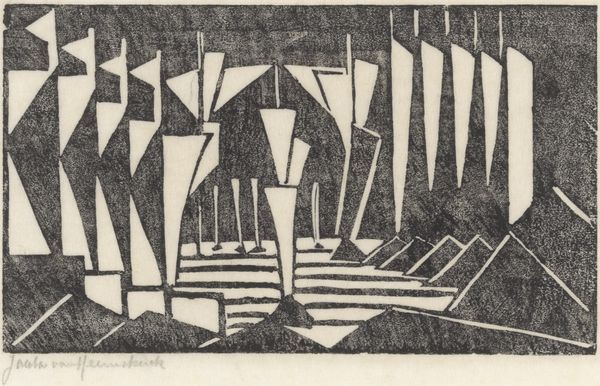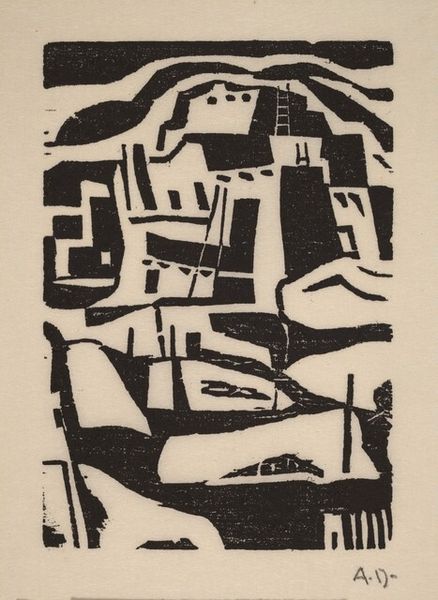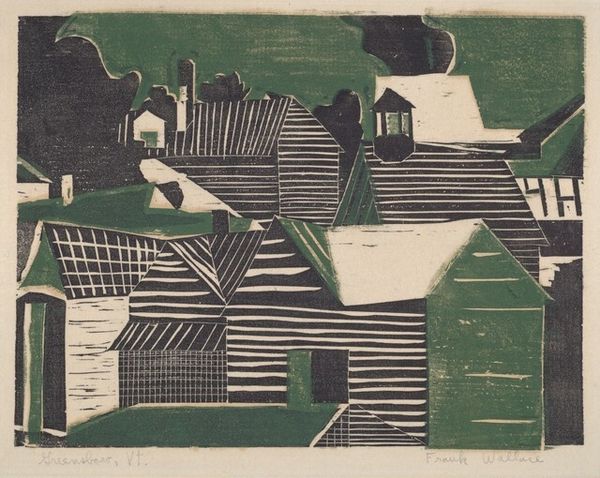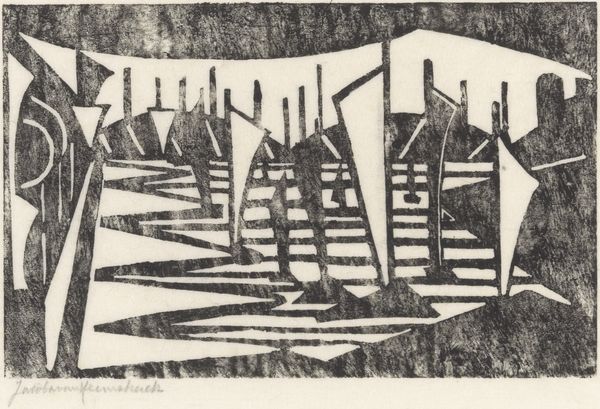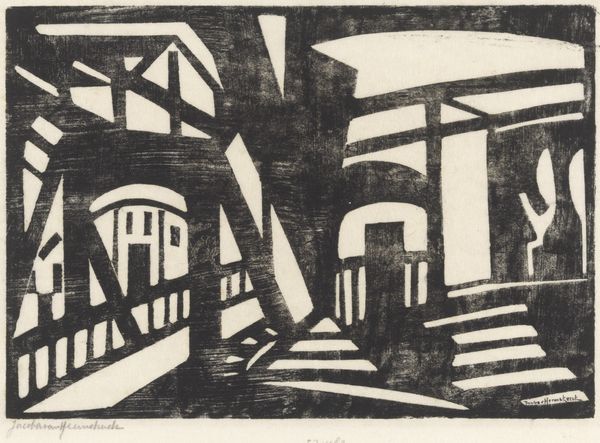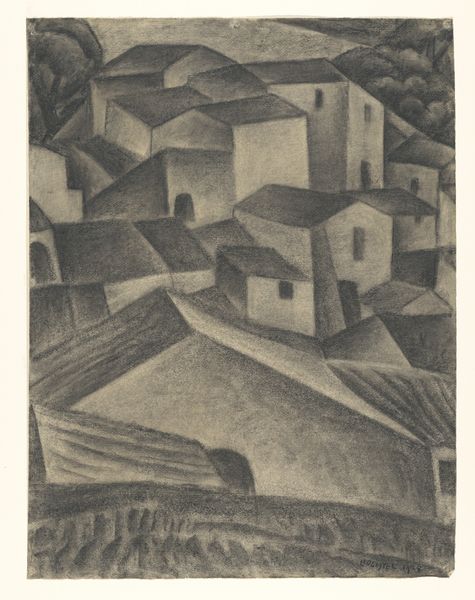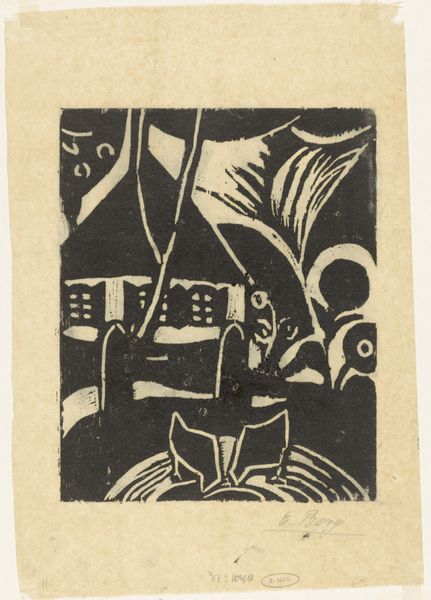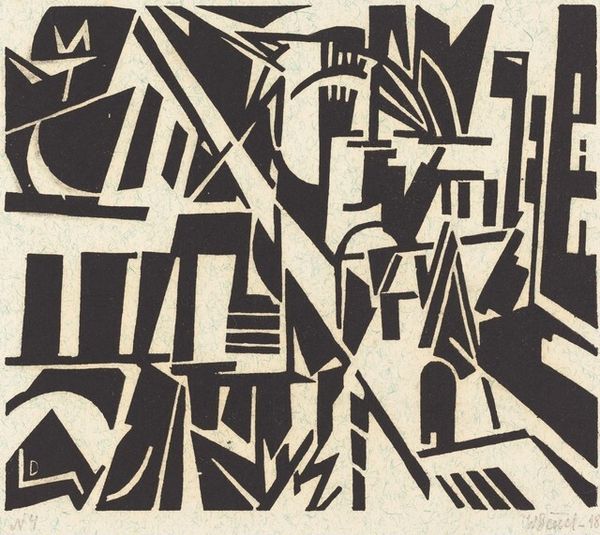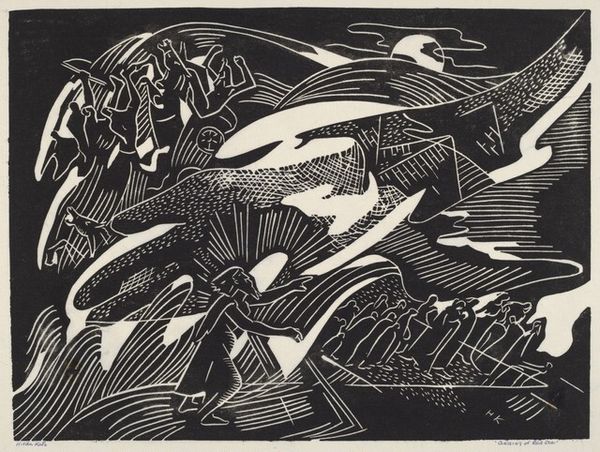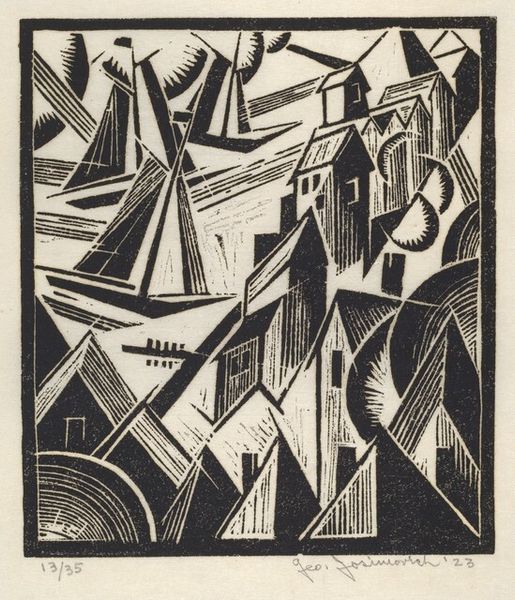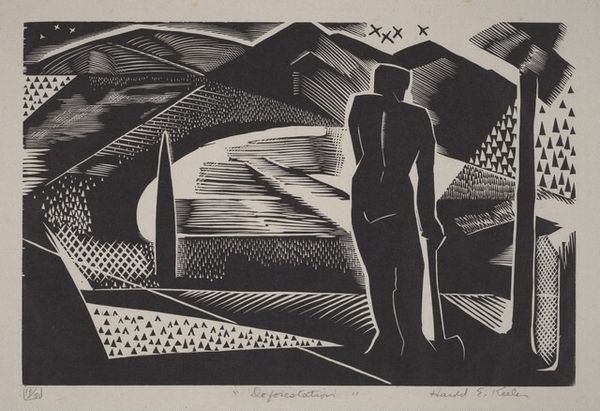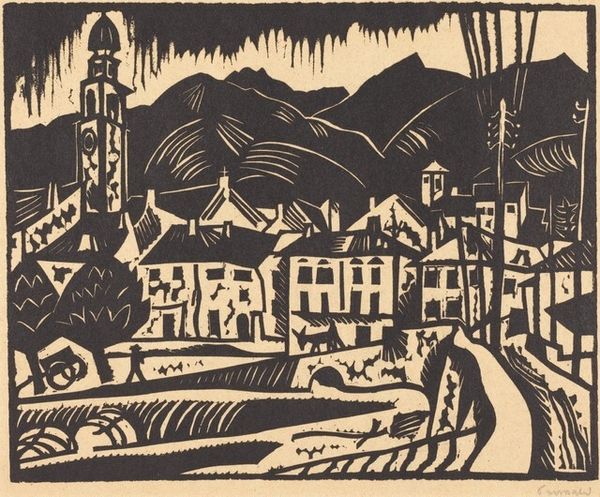
drawing, woodcut
#
drawing
#
lined art
#
landscape
#
expressionism
#
woodcut
#
abstraction
Dimensions: 18 1/2 x 24 1/2 inches (47 x 62.2 cm)
Copyright: Public Domain
Curator: Let’s talk about Jacoba van Heemskerck’s "Drawing 16," a woodcut on paper likely created between 1911 and 1921. You'll find it in the Met's collection. What strikes you most? Editor: Immediately, it's the starkness of the black lines against that beige background. It creates a somewhat somber, even slightly unsettling mood. Everything is reduced to its basic shapes. Is it a village? Curator: Yes, I think you’ve captured the feeling of it perfectly. Van Heemskerck was associated with early German Expressionism. Think of the way they often depicted fractured realities, reflecting social anxieties and shifting cultural values before and after the First World War. Editor: Right, Expressionism... the heightened emotions, the distortion. Looking at it, the abstracted buildings almost look like tombstones. There’s a real tension between the simplification and this implicit darkness. I notice, too, how she reduces the landscape’s forms into a sequence of upright pillars that could just as easily suggest mourners huddled together. Curator: Absolutely. This work emerged from a very particular time. Her landscape depictions often used geometric shapes and the simplification we see here mirrors an increasing move towards abstraction that we begin to see around this period. It becomes about more than representing an exact image. Instead, the art becomes concerned with form itself, to generate an emotional response in the viewer. Editor: It certainly does evoke a powerful feeling. Considering the woodcut medium and how graphic the image is overall, perhaps Van Heemskerck wanted to present the imagery as part of a collective expression. As a sort of symbol for wider anxieties during the period. The angular forms make it appear timeless and able to hold our projected fears of mortality and obsolescence. Curator: That’s a good point. And to consider, she's working in a male-dominated field at the time. This print acts as a solid case study for re-examining modern art from a gendered point of view and demonstrates how Expressionism gave female artists the license to engage with subjective states. Editor: Yes. There's definitely a lot going on beneath this seemingly simple composition. It resonates well beyond its formal qualities. Curator: Indeed. Its simplicity holds so much more.
Comments
No comments
Be the first to comment and join the conversation on the ultimate creative platform.
